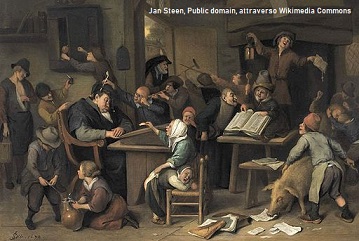Tools and models for distance teaching in an English Language and Culture university course: the flipped classroom and cooperative learning in a digital environment
DOI:
https://doi.org/10.54103/2035-7680/17885Parole chiave:
flipped classroom; distance teaching; COVID-19; task-based activities; teaching strategiesAbstract
The Covid-19 pandemic emergency has contributed to shift towards a more learner-centred teaching approach accelerating an ongoing trend in the university system. Re-arranging teaching materials and devices in different forms using digital tools and delivering online lessons, has been a complex challenge for academics. This necessity to re-adapt and possibly implement and re-shape traditional contents has contributed to consolidate teaching strategies as the flipped classroom (integration of pre-recorded lectures with online synchronous lessons) cooperative learning among peers (both in class and on online platforms with discussion groups), and small group teaching. These teaching strategies have also brought about a general re-thinking of learning strategies on the students’ part. To meet students’ needs in this emergency situation, materials have also been frequently developed by teachers themselves. Given such premises, this paper reports on the challenging attempt to adopt the afore-mentioned teaching strategies in an online course (English Language and Culture) held in 2020/21 at the Department of Education Science (Roma Tre University), also providing the students’ response to a questionnaire submitted after the completion of the course.
Metriche
Riferimenti bibliografici
Bates, Anthony William. Teaching in a Digital Age: Guidelines for Designing Teaching and Learning for a Digital Age, Tony Bates Associates LTD 2015, https://opentextbc.ca/teachinginadigitalage/. Accessed 10 Sept. 2021.
Bates, J. Edward, et al. The Flipped Classroom: A Brief, Brief History of the Flipped College Classroom. Springer, 2017.
Bevilacqua, Alessia. Flipped learning in ambito universitario. Presupposti e indicazioni pedagogico-didattici tra implementazione e ricerca. PensaMultimedia, 2018.
Bevilacqua, Alessia and Raúl Santiago Campión. “The Flipped Learning approach: quantitative research on the perception of Italian teachers – L’approccio Flipped Learning: un’indagine quantitativa sulle percezioni degli insegnanti italiani.” Form@re Open Journal per la formazione in rete, vol. 19, no. 2, 2019, pp. 405-422.
Biasi, Valeria, et al. “Innovazioni per la qualificazione degli ambienti virtuali di apprendimento e della didattica online nella formazione terziaria: una indagine esplorativa.” Journal of Educational, Cultural and Psychological Studies, no. 21, 2020, pp. 211-231.
Cecchinato, Graziano and Romina Papa. Flipped classroom. Un nuovo modo di insegnare e apprendere. UTET, 2016.
Chapelle, Carol A., and Shannon Sauro, editors. The Handbook of Technology and Second Language Teaching and Learning. Wiley Blackwell, Hoboken, 2020.
Cook, Vivian. Second Language Learning and Language Teaching. Hodder Education, 2008.
Cortés Velásquez, Diego, and Elena Nuzzo. “La didattica con i task: principi, applicazioni, prospettive.” Il task nell’insegnamento delle lingue. Percorsi tra ricerca e didattica al CLA di Roma Tre, edited by Diego Cortés Velásquez and Elena Nuzzo, Roma Tre Press, 2018, pp. 13-40.
EUROPEAN COMMISSION. Communication from the Commission to the Council and the European Parliament. The E-Learning Action Plan. Designing tomorrow’s education. Brussels: Commission of the European Communities, 2001.
---. Digital education action plan 2021-2027 – Resetting education and training for the digital age. Brussels: Commission of the European Communities, 2020.
Flores, Òscar, et. al. “The Flipped Classroom Model at the University: Analysis Based on Professors’ and Students’ Assessment in the Educational Field.” Int J Educ Technol High Educ, vol. 13, no. 21, 2016, https://doi.org/10.1186/s41239-016-0022-1. Accessed 28 Aug. 2021.
Grove, Jack. Should Student Attendance in Classes Be Compulsory. 2016, tesglobal.com. Accessed 18 Aug. 2021.
Gülbay, Elif, and Alessandra La Marca. “L’apprendimento capovolto all’Università per lo sviluppo delle soft skills.” Giornale Italiano della Ricerca Educativa – Italian Journal of Educational Research, anno XI, no. 20, Giugno 2018.
Hamdan, Noora, et al. A review of flipped learning. Pearson, 2013.
Hodges, Charles, et al. “The Difference Between Emergency Remote Teaching and Online Learning.” Educause Review, 2020, https://er.educause.edu/articles/2020/3/the-difference-between-emergency-remote-teaching-and-online-learning. Accessed 8 Sept. 2021.
Innocenti, Florence, and Eric Mazur, editors. Peer Instruction, A User’s Manual. Prentice–Hall, 2021.
Jacot, Melanie T., et al. “The Flipped Classroom in Training and Development: Fad or the Future?” Performance Improvement, vol. 53, no. 9, 2014, pp. 23-28.
Longo, Leonarda. Insegnare con la flipped classroom. Stili di apprendimento e “classe capovolta.” La Scuola, 2016.
Lopriore, Lucilla. “Revisiting Language Teaching Materials in a Time of Change.” Revista Digital dos Programas de Pós-Graduação do Departamento de Letras e Artes da UEFS Feira de Santana, vol. 18, no. Especial, pp. 182-199, 2017.
Luppi, Elena, et al. “L’innovazione della didattica all’Università di Bologna durante la pandemia: un percorso basato sulla ricerca valutativa – Learning and teaching innovation at the University of Bologna during the pandemic: a path based on evaluation research.” Lifelong, Lifewide Learning (LLL), vol. 17, no. 36, 2020, pp. 44-57.
Maglioni, Maurizio. Capovolgiamo la scuola. Le cinque leve Flipnet per un nuovo sistema educativo. Erickson, 2018.
Mascheroni, Giovanna, et al. “Learning at a Distance: Children’s Remote Learning Experiences in Italy during the COVID-19 Pandemic.” Peer Instruction, A User’s Manual, edited by Florence Innocenti and E. Mazur. Prentice–Hall, 2021.
Mills, David, and Patrick Alexander. Small Group Teaching: a Toolkit for Learning. The Higher Education Academy, 2016.
Mohan, Bernard A. Language and Content. Addison Wesley, 1986.
Mori, Tomoko. “The Flipped Classroom: An Instructional Framework for Promotion of Active Learning.” Deep Active Learning: Toward Greater Depth in University Education, edited by Kayo Matsushita. Springer Singapore, 2018, pp. 95-109.
O’Flaherty, Jacqueline and Craig Phillips. “The Use of Flipped Classrooms in Higher Education. A Scoping Review.” Internet and Higher Education, no. 25, 2015, pp. 85-95.
Prensky, Marc. Digital Natives, Digital Immigrants. S.A. Distribuidora SEK, 2010, https: // goo.gl/ibWsHN. Accessed 10 Jul. 2021.
Raffaghelli, Juliana. “Does Flipped Classroom work? Critical analysis of empirical evidences on its effectiveness for learning.” Form@Re – Open Journal Per La Formazione In Rete, vol. 17, no. 3, 2017, pp. 116–134.
Ramella, Francesco, and Michele Rostan, Universi-DaD. Gli accademici italiani e la didattica a distanza durante l’emergenza Covid-19. Università degli Studi di Torino, 2020.
Rizzardi, Maria Cecilia, and Monica Barsi. Metodi in classe per insegnare la lingua straniera. Led Edizioni Universitarie, 2005.
Roach, Travis. “Student Perceptions toward Flipped Learning: New Methods to Increase Interaction and Active Learning in Economics.” International Review of Economics Education, no. 17, 2014, pp. 74-84.
Siciliano, Sarah, and Ana María Ramírez Ganfornina. “The University betrayed: an exploratory survey on online teaching in the times of Covid-19 – L’Università tradita: una ricerca esplorativa sulla didattica ai tempi del COVID 19.” QTimes – webmagazine. Anno XIII, no. 2, 2021, pp. 433-447.
Talbert, Robert. Flipped Learning: A Guide for Higher Education Faculty. Stylus Publishing, 2017.
Yarbro, Jessica, et al. “Extension of a review of flipped learning,” Flipped Learning Network, Pearson, George Mason University, 2016. https://flippedlearning.org/wpcontent/uploads/2016/07/Extension-of-FLipped-Learning-LIt-Review-June2014.pdf, 2014. Accessed 12 Feb. 2022.
Dowloads
Pubblicato
Come citare
Fascicolo
Sezione
Licenza

Questo articolo è soggetto a licenza Creative Commons Attribution-NonCommercial-NoDerivatives 3.0 International License.




